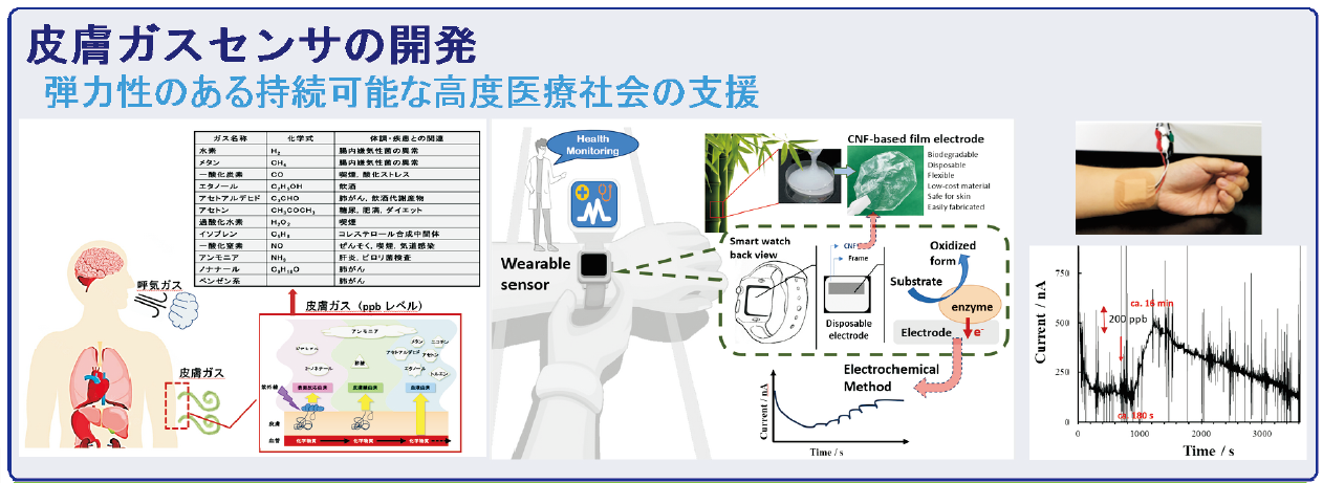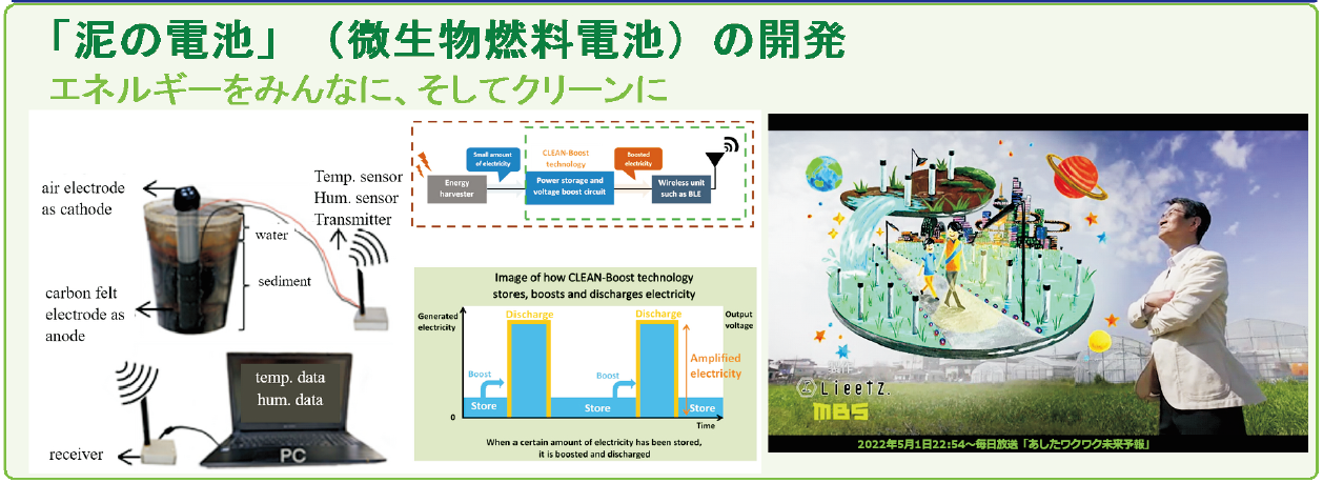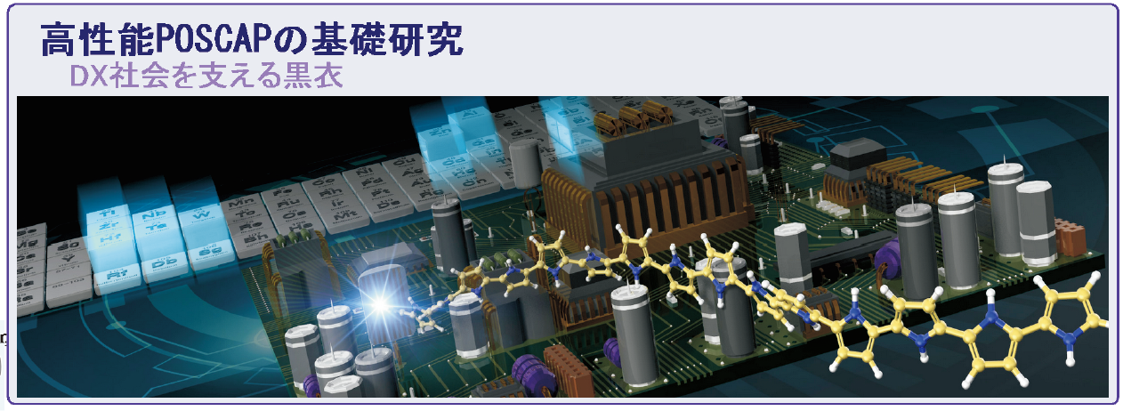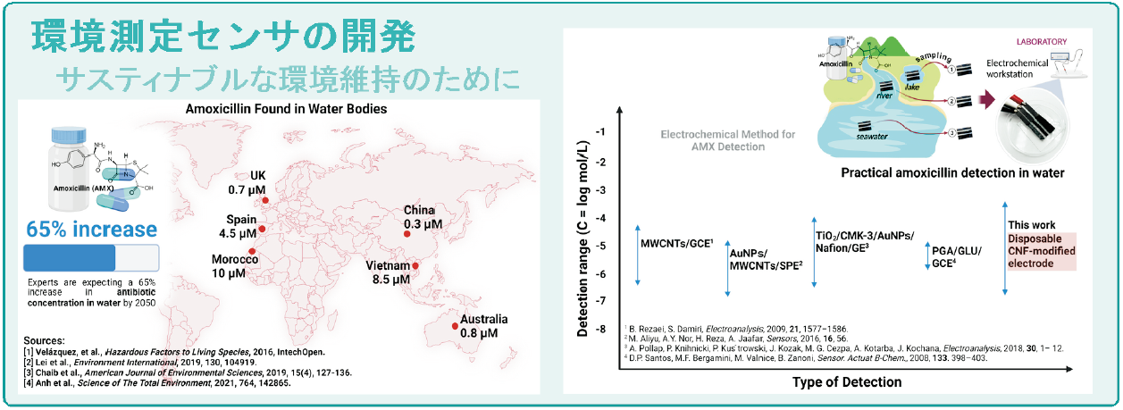Research
Electrochemistry
Oxidation-reduction reaction is a phenomenon of fundamental basis for energy production of life activity. The principle of an energy production also applies to the principle of fuel cells. Tominaga laboratory aims to investigate an essence of redox reactions mainly by using the electrochemical approach. In addition, as part of its application, we are exploring enzyme-catalyzed fuel cells, enzyme sensors, microbial fuel cells, chemical sensors, and oxide films on valve metals.
Bioelectrochemistry
At Tominaga Laboratory, we are studying the direct electron transfer reaction between electron transfer proteins and oxidoreductases and the electrode interface. It is extremely difficult to achieve the electron transfer reaction between enzymes occurring in the living body “between the enzyme and the electrode”. Therefore, by designing the structure of the electrode interface and imparting functionality to the interface, it is possible to achieve difficult electron transfer reactions. When the electron transfer reaction between this enzyme and the electrode becomes possible, the enzyme reaction can be converted into an electrical signal for analysis. This will lead to the development of enzyme sensors and enzyme fuel cells. In our laboratory, we manufacture sugar-air enzyme fuel cells that combine enzymes that oxidize sugar and enzymes that reduce oxygen, and achieve LED light emission and motor drive.
Development of enzyme electrodes
By achieving a fast electron transfer reaction between the enzyme and the electrode, the enzyme reaction can be converted into an electrical signal for analysis. Mobile blood glucose sensors use this principle. Furthermore, it can be expanded to enzyme fuel cells that can extract electricity using enzymes as catalysts. In our laboratory, we are developing an enzyme-catalyzed fuel cell using an enzyme that oxidizes the substrate and an enzyme that reduces oxygen.
Electronic interfaces for biomolecules

“Mud battery” (microbial fuel cell)
Generally, “aerobic bacteria” and “anaerobic bacteria” are known as classifications of microorganisms. On the other hand, focusing on “electron flow”, microorganisms can also be classified as “power generation bacteria (electron transport bacteria)” and “electric bacteria (electron extraction)”. You can use this power-generating bacterium to develop a microbial fuel cell that uses microorganisms. In our laboratory, we use actual mud to “promote mud purification” and extract “as much electricity as possible” using “mud as it is” and “microorganisms that live there”. With that as a concept, we call it a “mud battery”. Previous studies have demonstrated that power can be generated from tidal flat mud, volcanic mud, and paddy mud.
Development of “mud battery” utilizing microorganisms and expansion to IoT independent power supply

Basic research on tantalum oxide formation
Many capacitors are used in smartphones, which have also become social infrastructure. One of the types of capacitors used is “electropolymerized tantalum capacitors”. This capacitor has a tantalum oxide film coated with a conductive polymer. In our laboratory, we are conducting basic research on the formation of an oxide film of tantalum and the improvement of the characteristics of conductive polymers.
Basic research for high-performance POSCAP

Development of electrochemical catalysts and sensors
Nanoparticles have an extremely large specific surface area. Therefore, the catalytic reaction on the surface proceeds smoothly, and the amount of reaction on the surface increases, so the sensitivity can be increased. In addition, you can expect a nano-size effect. In our laboratory, we are studying the conversion of carbon dioxide into useful substances by electrochemical catalytic reduction using alloys. We are also developing sensor electrodes that use metal nanoparticles to detect ions and bio-related substances with high sensitivity.

